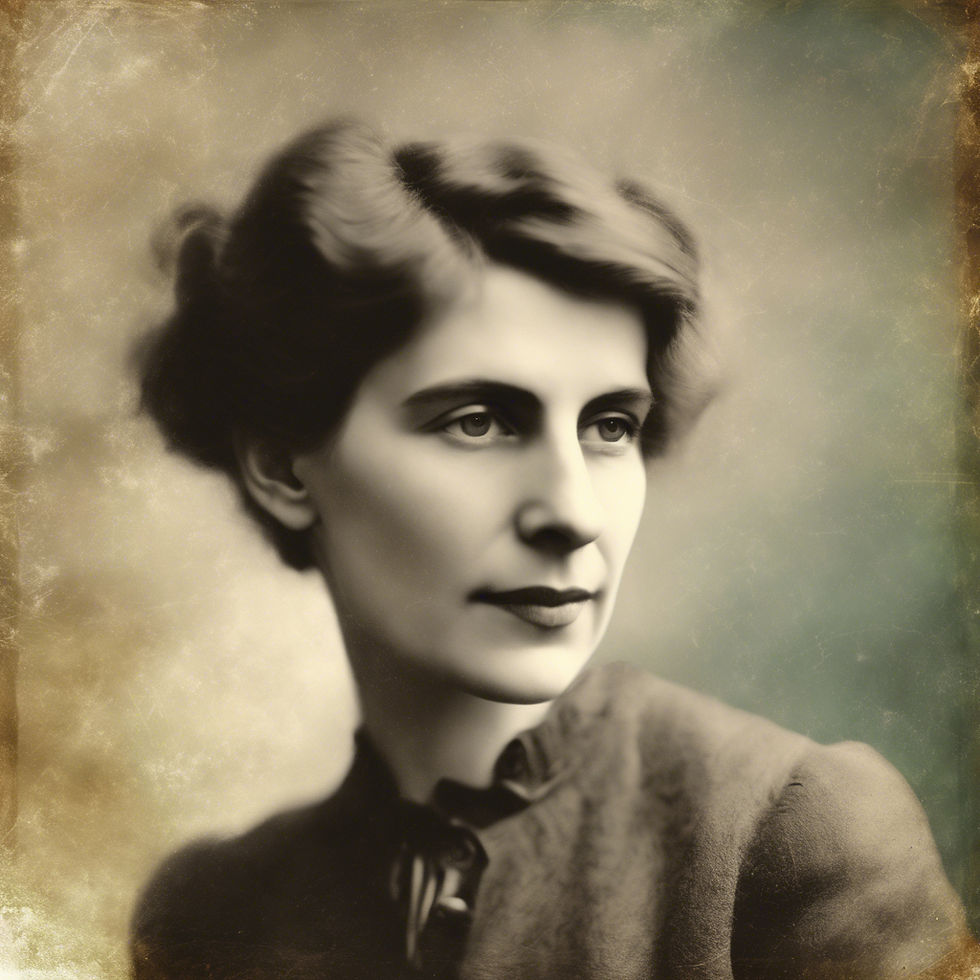With Freud, Bowlby, Winnicott, Klein, Ogden, Yalom, Becker, and Anna
Our exploration into the human psyche has traversed through the theories of attachment, transference, existential fears, and cultural defences against mortality.
Joining our rich dialogue now are the radical thinkers Gilles Deleuze and Félix Guattari. Known for their complex and ground breaking ideas, Deleuze and Guattari challenge traditional notions of identity, desire, and the unconscious, offering a fresh and dynamic perspective on human experience.
I used these theorists in my research on 'Therapists emotional reactions to clients who self-injure. They offer an alternative data analysis which is not linear - just like the rhizome!!
In their seminal work, “A Thousand Plateaus,” Deleuze and Guattari introduce the concept of the rhizome—an image of thought that defies hierarchical structures and embraces multiplicity, connectivity, and continuous growth. They also delve into the nature of desire, rejecting the psychoanalytic model of lack and proposing instead a productive, positive force that flows through and connects everything.
As Deleuze and Guattari join Freud, Bowlby, Winnicott, Klein, Ogden, Yalom, Becker, and Anna, their theories will bring a new layer of complexity and fluidity to our understanding of Anna’s journey through erotic transference, attachment, and existential anxiety. Their ideas about the rhizome, assemblages, and the desiring machine will open up novel ways of thinking about the interconnectedness and dynamism of human experience.
The Arrival of Deleuze and Guattari
In the intellectual gathering within Freud’s office, Deleuze and Guattari make their entrance, bringing with them a whirlwind of revolutionary ideas. Known for their non-linear, boundary-breaking approach, they immediately capture the attention of the assembled thinkers. Deleuze, with his philosophical rigor, and Guattari, with his radical psychiatric insights, form a dynamic duo ready to challenge and expand the existing paradigms.
Freud, Bowlby, Winnicott, Klein, Ogden, Yalom, and Becker are eager to see how Deleuze and Guattari’s theories can illuminate Anna’s complex emotional landscape. The concept of the rhizome—decentralised, interconnected, and ever-growing—provides a stark contrast to the traditional hierarchical models of understanding the mind. Anna, too, is curious about how these ideas might apply to her experiences of erotic transference and her search for meaning.
The Rhizome and Multiplicity
Deleuze and Guattari begin by introducing the concept of the rhizome. Unlike the tree-like structures of traditional models, which emphasise roots and a singular origin, the rhizome represents a network of endless connections, without a central point or hierarchy. This model embraces multiplicity, suggesting that human experience and identity are not fixed or singular but fluid and interconnected.
Anna considers how her identity and her emotional experiences might be more like a rhizome—interconnected and multifaceted—rather than a single, linear progression. She reflects on how her intense feelings towards Freud and her various attachments might be part of a broader, non-linear network of influences and connections.
Freud acknowledges that while his psychoanalytic model seeks to uncover deep-rooted causes and singular origins, the rhizome offers a different perspective that emphasises the complexity and multiplicity of human experience. Bowlby and Winnicott, with their focus on attachment and the internal world, recognise that the rhizome can provide a richer understanding of the interconnectedness and fluidity of relationships and internal dynamics.
Klein’s work on internal objects and the multiplicity of the self aligns with the rhizome’s rejection of a singular, unified identity. Ogden’s metaphor of projection and his exploration of the interplay between the internal and external worlds resonate with the idea of a dynamic, ever-changing network of influences.

Assemblages and the Desiring Machine
Deleuze and Guattari introduce another key concept: the assemblage.
An assemblage is a dynamic, interconnected system of elements that come together to form a complex whole. Unlike rigid structures, assemblages are fluid and adaptable, constantly forming and reforming in response to internal and external forces.
Anna begins to see her experiences, relationships, and emotions as part of an ever-evolving assemblage. Her erotic transference to Freud, her attachments, and her existential anxieties are not isolated phenomena but interconnected elements within a broader, dynamic system. This perspective helps her to understand her experiences as part of a larger, more complex network of influences.
The idea of the desiring machine challenges traditional notions of desire as a response to lack. Instead, Deleuze and Guattari propose that desire is a positive, productive force that flows through all things, constantly creating and connecting. Anna reflects on how her intense feelings and desires might be seen not as deficiencies but as vital, creative forces that drive her towards connection and growth.
Yalom’s focus on confronting existential fears and Becker’s emphasis on the denial of death are enriched by the idea of desire as a productive force. Rather than merely defending against the fear of mortality, Anna’s quest for meaning and connection can be seen as part of a broader, dynamic process of creation and transformation.
Deterritorialization and Re-territorialization
Deleuze and Guattari explore the concepts of deterritorialization and re-territorialization, processes that describe the ways in which systems, identities, and experiences are continuously disrupted and reformed. Deterritorialization involves breaking free from established structures and norms, while re-territorialization involves the re-establishment of new connections and configurations.
Anna considers how her journey might be seen as a process of deterritorialization and re-territorialisation. Her struggles with erotic transference and attachment involve breaking free from past patterns and exploring new ways of connecting and understanding herself. This perspective helps her to see her experiences not as fixed or predetermined but as part of a dynamic, ongoing process of transformation.
Freud’s exploration of the unconscious, Bowlby’s focus on attachment, and Winnicott’s emphasis on the internal world are all enriched by the idea of continuous disruption and reformulation. Klein’s work on internal conflicts and Ogden’s exploration of projection resonate with the fluid, ever-changing nature of deterritorialization and re-territorialisation.

Embracing the Flux of Existence
With Deleuze and Guattari’s insights, Anna begins to embrace the complexity and fluidity of her experiences. She learns to see her identity, relationships, and emotions as part of a dynamic, interconnected network that is constantly evolving. This perspective helps her to navigate her journey with greater openness and flexibility, recognising that her path is not linear or fixed but multifaceted and ever-changing.
Freud, Bowlby, Winnicott, Klein, Ogden, Yalom, and Becker each contribute their perspectives, enriching Anna’s understanding of how her internal dynamics and external relationships are shaped by the interconnected, dynamic forces described by Deleuze and Guattari. They help her to see how her quest for meaning and connection is part of a broader, ever-evolving process of creation and transformation.
As Anna navigates the complexities of her emotions and her existential fears, she learns to embrace the multiplicity and fluidity of her existence. She discovers that by understanding and integrating the dynamic, interconnected nature of her experiences, she can find new paths to authenticity and fulfilment.
Navigating the Rhizome of Life
Anna’s journey with Freud, Bowlby, Winnicott, Klein, Ogden, Yalom, Becker, and now Deleuze and Guattari, reveals the profound complexity and dynamism of our psychological and existential lives. The concepts of the rhizome, assemblages, and the desiring machine offer a fresh and illuminating perspective on how our identities, relationships, and emotions are shaped by interconnected, fluid forces.
Through the combined wisdom of these pioneering thinkers, Anna learns to navigate her emotions and her existential fears with greater clarity and compassion. She discovers that her journey is not just about understanding her past or managing her relationships but also about embracing the dynamic, ever-changing nature of her existence.






Comments